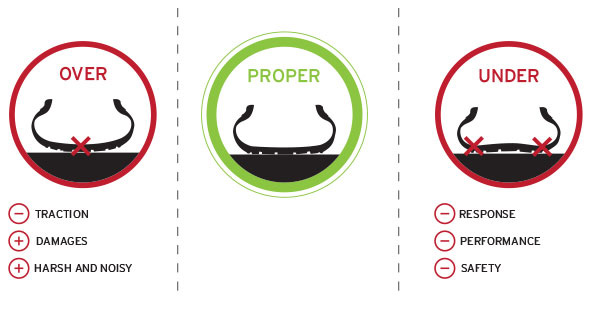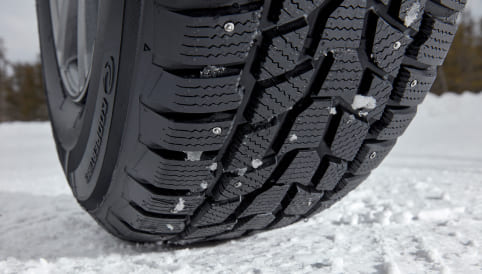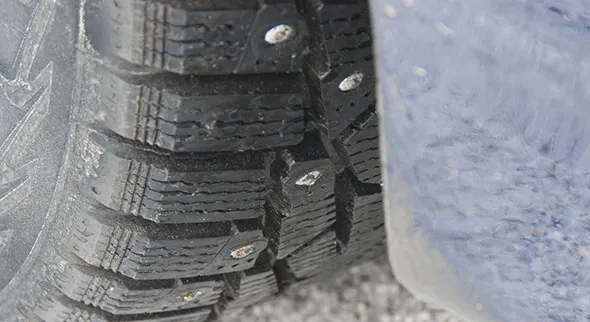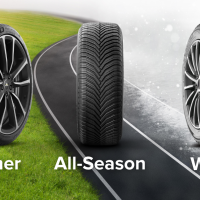How Much Tread Depth Is Enough?
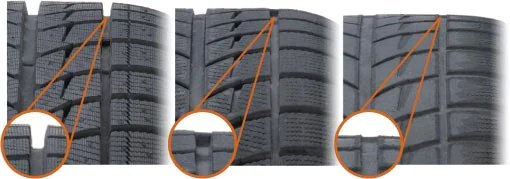
How Much Tread Depth Is Enough?
While deep snow and ice-covered roads are two of the most challenging conditions North American drivers will face, tire developments during the last decade have noticeably advanced wintertime mobility. The technological revolution of dedicated winter tires for drivers in the snowbelt, and the continuing evolution of all-season tires for drivers living on its periphery characteristically offer more grip in snow and on ice than ever before.
However, the basics of delivering traction and handling in snow and on ice remain unchanged. Tires must combine three fundamental features to deliver good wintertime performance, including an appropriate tread design, pliable tread compound and sufficient tread depth. If any one of these fundamental features is absent, the other two, regardless of their ability, cannot deliver the desired results! Since engineers can develop cutting-edge tread designs and chemists can develop advanced rubber compounds, it is often the remaining tread depth that is the variable in determining wintertime performance.
| New Tire Tread Depth | Approaching Winter Wear Indicators |
Approaching Tread Wear Indicators |
 |
||
| Combines necessary features (tread design, compound and depth) to provide effective snow traction | The tire has worn to about 5/32″, where its ability to provide beneficial snow traction diminishes | While still legal at 2/32″, the tire has worn well past the depth where it provides beneficial snow traction |
In most parts of the world, tires are considered to be legally worn out when they reach 2/32″ (approximately 1.6mm) of remaining tread depth. U.S. law requires tires to have easy-to-see Tread Wear Indicator bars running from one side of their tread design to the other when the tire’s tread has worn down to the minimum legal limit of 2/32 inch.
However, in spite of the legal minimums, Tire Rack recommends that drivers expecting to experience wet conditions consider replacing their tires when they reach 4/32″ of remaining tread depth. Tire Rack’s tests have shown how shallow treads reduce wet braking traction and increase stopping distances.
Tire Rack also recommends that drivers expecting to encounter snow-covered roads consider replacing their tires when they reach approximately 5/32″ of remaining tread depth to maintain good mobility. Tires need more tread depth in wintry conditions to compress snow in their grooves and release it as they roll. If there isn’t sufficient tread depth, the “bites” of snow that can be processed on each tire revolution will be reduced to “nibbles,” and the vehicle’s traction and mobility in snow will be reduced.
Fortunately, winter tires are typically molded with deeper tread depths than summer or all-season tires, and many of them also feature Winter Wear Indicators (also called Snow Platforms) to identify that a tire’s tread depth remains suitable for beneficial snow performance. While Winter Wear Indicators are not intended to be a sign the tire is legally worn out, experience shows that the available snow traction has passed the point of diminishing returns when the tread has worn down to approximately 5/32″ of remaining tread depth and the Winter Wear Indicators are seen connecting adjacent tread blocks.
While few all-season tires have Winter Wear Indicators molded into their tread designs, their winter snow traction will also pass the point of diminishing returns when their treads wear down to approximately 5/32″ of remaining tread depth and Tire Rack recommends that they be replaced as well.
Too little is never enough!


